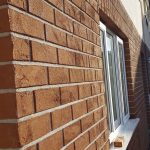External wall insulation

External Wall Insulation (EWI) systems by definition are applied to the exterior of a property, offering improved energy efficiency, weather protection and building aesthetics.
They totally encapsulate the building structure which is the most effective way of insulating a building, with least risk of cold bridging and interstitial condensation.
What is External Wall Insulation?
An External Wall Insulation (EWI) system comprises rigid insulation boards fixed to the exterior walls of a property creating a ‘thermal jacket’, which are then over-coated with a weather protective, breathable, hard wearing, attractive render finish. This improves the building’s energy efficiency.
BENEFITS OF EXTERNAL WALL INSULATION (EWI)
Lowers Fuel Bills
High insulation levels achieved by the installation of an External Wall Insulation system result in savings on energy bills. An average solid wall semi-detached home could save around £475 per year on fuel costs (Source: Energy Savings Trust).
Prolongs Building Life
External Wall Insulation systems protect the building façade from the effects of the weather. Alumasc systems have an assessed minimum life of 30 years.
Improves Building Appearance
External Wall Insulation systems incorporate an extensive range of decorative finishes and colours ranging from modern silicone textured renders to traditional brick-effect finishes and many more in between.
Eliminates Condensation
External Wall Insulation helps eliminate interstitial and internal condensation and assists with overcoming associated problems such as damp internal walls and mould growth.
Minimises Disruption
By definition, External Wall Insulation systems are installed on the exterior of a building/property, therefore occupants do not have to leave their business premises or the comfort of their homes during the application of the system. In addition, internal space is not infringed upon.